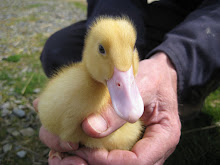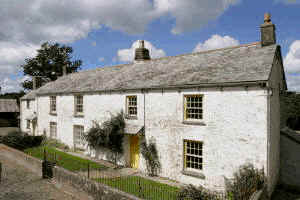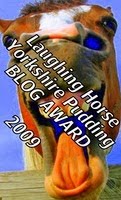 A casual conversation about bird feeders, £5.95 on a peanut feeder and £4 on one for suet balls spent in the local agricultural store, a length of ash cut from the firewood heap, feeders dangling in the breeze, and there was years worth of education and entertainment all set up less than a yard from the kitchen window. That was in March. Since then there have been: nuthatches (look, look, there's one that prefers to eat upside down...); a wren or two - a personal favourite; blue tits and great tits; house and tree sparrows; chaffinch, goldfinch, bullfinch; and a pair of great spotted woodpeckers. The woodpeckers were spectacular: large, dominant and shy with brilliant red patches under their tails and on the back of the (male) head, they successfully reared two young that later learned to feed themselves as juveniles after sitting on the iron railings getting their parents to loosen peanut after peanut from the feeder and pass them on like a parent doling out smarties to toddlers. Apparently woodpeckers also feed their young on baby blue tits and there are no shortage of those.
A casual conversation about bird feeders, £5.95 on a peanut feeder and £4 on one for suet balls spent in the local agricultural store, a length of ash cut from the firewood heap, feeders dangling in the breeze, and there was years worth of education and entertainment all set up less than a yard from the kitchen window. That was in March. Since then there have been: nuthatches (look, look, there's one that prefers to eat upside down...); a wren or two - a personal favourite; blue tits and great tits; house and tree sparrows; chaffinch, goldfinch, bullfinch; and a pair of great spotted woodpeckers. The woodpeckers were spectacular: large, dominant and shy with brilliant red patches under their tails and on the back of the (male) head, they successfully reared two young that later learned to feed themselves as juveniles after sitting on the iron railings getting their parents to loosen peanut after peanut from the feeder and pass them on like a parent doling out smarties to toddlers. Apparently woodpeckers also feed their young on baby blue tits and there are no shortage of those.Fledglings of all kinds have hovered about looking fresh and fluffy and unsure, and the type and age of birds visiting have changed as the months have passed. The time of day also dictates who eats when. Early morning, before anyone is up, magpies take advantage. I really don't like these birds as they eat the duck eggs and have a raucous and insistent call. They have gone further down in my estimation by not only nicking the peanuts put out for the smaller birds, but tapping loudly on the windows hours before any sane person would consider setting their alarm clock. The vigour of their tapping initially made me rush out of bed wondering what someone could possibly want at that hour - sheep out on the road perhaps - but no, it's just the magpies having their fun. Their brothers, the rooks, are equally irritating as they build nests in the chimney pots causing great clumps of twigs and mummified birds to fall into the chimneys and woodburners, so I light small fires during the summer to dissuade them.
Some of the birds haven't eaten directly from the feeders but pecked instead at the suet and nut crumbs that dusted the grass below like hundreds and thousands. These crumbs also attracted mice, and inevitably, the cats, although surprisingly few birds have been caught. Until yesterday that is. At breakfast there was a whoosh of feathers as a cloud of sparrows dived under the broom bush for cover. A few seconds later a sparrowhawk emerged, sparrow secured in its yellow claws with black talons. He stood for a few moments, just 4 feet away, whilst I had a really good look, and then took off, leaving the remaining sparrows distinctly and understandably nervous for the rest of the day.
The yard has also seen a lot of other birds not attracted to the feeders. Wagtails bounce their way along the ground, or at least the constantly wagging tails make it look like that. House martins have built several of their muddy nests under the eaves around the house, stealing bits of cob from the crumbling barns and swooping in flocks of twenty or so in circles across the yard in the late afternoon. Some are more successful nest builders than others, having watched one make a feeble attempt whilst others were finishing their elaborate structures just inches away. Swallows and swifts are also frequent visitors, sitting on power cables and joining the house martins in their circular exercises. In the evenings you can hear and sometimes see the barn owl, a truly gorgeous creature, and the tawny owl too with its hooting call which if you mimic will get you a response. Then there are the robins which appear from late summer; the cuckoo, although you hear it close by I've never seen it; many buzzards who are incredibly bold round here and can land fairly close to you; the pheasants that shared the pig paddock, eating any rare leftovers; the grey partridge that hatched and reared its young in the middle of Mopsa's Meadow; the snipe that paddle about in the wet drainage ditches with their young. The list goes on, and on.

















No comments:
Post a Comment